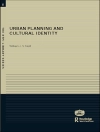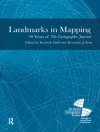The International Symposium on Spatial Data Handling (SDH) commenced in 1984, in Zurich, Switzerland, organized by the International Geographical Union Commission on Geographical Data Sensing and Processing which was later succeed by the Commission on Geographic Information Systems, Study Group on Geographical Information Science and then the Commission on Geographical Information Science (http://www. hku. hk/cupem/igugisc/). Previous symposia have been held at the following locations: 1st – Zurich, 1984 6th – Edinburgh, 1994 2nd – Seattle, 1986 7th – Delft, 1996 3rd – Sydney, 1988 8th – Vancouver, 1998 4th – Zurich, 1990 9th – Beijing, 2000 5th – Charleston, 1992 10th – Ottawa, 2002 th This book is the proceedings of the 11 International Symposium on Spatial Data Handling. The conference was held in Leicester, United rd th Kingdom, on August 23 to 25 2004, as a satellite meeting to the Congress of the International Geographical Union in Glasgow. The International Symposium on Spatial Data Handling is a refereed conference. All the papers in this book were submitted as full papers and reviewed by at least two members of the Programme Committee. 83 papers in all were submitted and among the 50 included here, all are considered above average by the reviewers. The papers cover the span of Geographical Information Science topics, which have always been the concern of the conference. Topics from uncertainty (error, vagueness, and ontology and semantics) to web issues, digital elevation models and urban infrastructure.
Table of Content
Plenary of Submitted Papers.- About Invalid, Valid and Clean Polygons.- 3D Geographic Visualization: The Marine GIS.- Local Knowledge Doesn’t Grow on Trees: Community-Integrated Geographic Information Systems and Rural Community Self-Definition.- Web GIS.- A Flexible Competitive Neural Network for Eliciting User’s Preferences in Web Urban Spaces.- Combining Heterogeneous Spatial Data From Distributed Sources.- Security for GIS N-tier Architecture.- Progressive Transmission of Vector Data Based on Changes Accumulation Model.- Elevation modelling.- An Efficient Natural Neighbour Interpolation Algorithm for Geoscientific Modelling.- Evaluating Methods for Interpolating Continuous Surfaces from Irregular Data: a Case Study.- Contour Smoothing Based on Weighted Smoothing Splines.- Flooding Triangulated Terrain.- Vagueness and Interpolation.- Vague Topological Predicates for Crisp Regions through Metric Refinements.- Fuzzy Modeling of Sparse Data.- Handling Spatial Data Uncertainty Using a Fuzzy Geostatistical Approach for Modelling Methane Emissions at the Island of Java.- Temporal.- A Visualization Environment for the Space-Time-Cube.- Finding REMO — Detecting Relative Motion Patterns in Geospatial Lifelines.- Indexing.- Spatial Hoarding: A Hoarding Strategy for Location-Dependent Systems.- Distributed Ranking Methods for Geographic Information Retrieval.- Representing Topological Relationships between Complex Regions by F-Histograms.- The Po-tree: a Real-time Spatiotemporal Data Indexing Structure.- Uncertainty.- Empirical Study on Location Indeterminacy of Localities.- Registration of Remote Sensing Image with Measurement Errors and Error Propagation.- Double Vagueness: Effect of Scale on the Modelling of Fuzzy Spatial Objects.- Area, Perimeter and Shape of Fuzzy Geographical Entities.- Generalisation.- Why and How Evaluating Generalised Data ?.- Road Network Generalization Based on Connection Analysis.- Continuous Generalization for Visualization on Small Mobile Devices.- Shape-Aware Line Generalisation With Weighted Effective Area.- Spatial Relationships.- Introducing a Reasoning System Based on Ternary Projective Relations.- A Discrete Model for Topological Relationships between Uncertain Spatial Objects.- Modeling Topological Properties of a Raster Region for Spatial Optimization.- Sandbox Geography — To learn from children the form of spatial concepts.- Urban Infrastructure.- Street Centreline Generation with an Approximated Area Voronoi Diagram.- Determining Optimal Critical Junctions for Real- time Traffic Monitoring for Transport GIS.- Collaborative Decision Support for Spatial Planning and Asset Management: IIUM Total Spatial Information System.- Navigation.- Automatic Generation and Application of Landmarks in Navigation Data Sets.- Towards a Classification of Route Selection Criteria for Route Planning Tools.- An Algorithm for Icon Labelling on a Real-Time Map.- Working with Elevation.- Semantically Correct 2.5D GIS Data — the Integration of a DTM and Topographic Vector Data.- Generalization of integrated terrain elevation and 2D object models.- An Image Analysis and Photogrammetric Engineering Integrated Shadow Detection Model.- Semantics and Ontologies.- Understanding Taxonomies of Ecosystems: a Case Study.- Comparing and Combining Different Expert Relations of How Land Cover Ontologies Relate.- Representing, Manipulating and Reasoning with Geographic Semantics within a Knowledge Framework.- Data Quality and Metadata.- A Framework for Conceptual Modeling of Geographic Data Quality.- Consistency Assessment Between Multiple Representations of Geographical Databases: a Specification-Based Approach.- Integrating structured descriptions of processes in geographical metadata.- Spatial Statistics.- Toward Comparing Maps as Spatial Processes.- Integrating computational and visual analysis for the exploration of health statistics.- Using Spatially Adaptive Filters to Map Late Stage Colorectal Cancer Incidence in Iowa.












